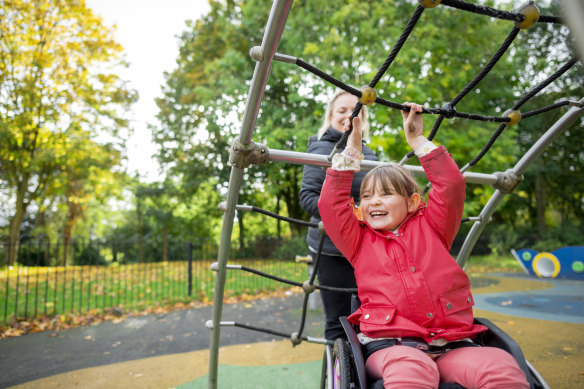This was published 2 years ago
Opinion
We went to Australia’s ‘most dangerous playground’ – and my kids loved it
Amelia Lester
ColumnistYou can’t judge a book by its cover, but my contention is that you can judge a society by its playgrounds. In London last year, I spent an inordinate chunk of a summer holiday at a playground on Clapham Common in the city’s south-west. The playground was lovely, but very different to those I frequent in the United States.
For a start, it was enclosed – a rarity even in the city of Washington, D.C., where I live – and, for the most part, the equipment was prescriptive. Think trampolines and tunnels and all manner of buttons to press. The word I would use to describe it would be “self-contained”, and it felt perfectly safe for kids of all ages.

I hope to capture some of that sense of risk and adventure we saw at Boongaree Nature Park, in the NSW town of Berry, in the way my kids now play.Credit: iStock
Back in Australia over Christmas, I visited Boongaree Nature Play Park in the town of Berry, on the NSW South Coast. This playground was different again – a massive space on the edge of town catering to free-range children. (Less so, their slightly anxious parents.) There were two flying foxes, a human-sized hamster wheel, the world’s most enormous tyre swing and a climbing structure reaching heights so dizzying I’d definitely be too scared to scale it.
Although American playgrounds also feature fairly daring equipment, there are always signs to indicate which age each piece is designed for. Given children are not known to be scrupulous rule-followers, I suspect these signs are as much for legal cover as anything else.
There was no such guidance at the Berry playground. The signs that were there instead emphasised the importance of risk-taking in children’s development and confidence-building. In essence, these signs told caregivers to back off and allow the children themselves to intuit their own limits.
In essence, these signs told caregivers to back off and allow the children themselves to intuit their own limits.
This rule doesn’t always work out. After a handful of accidents on its very tall metal slide, the Daily Mail has asked if Boongaree is “Australia’s most dangerous playground”, and a review has been demanded by local parents into the slide’s safety.
Perhaps we were just lucky, but my kids loved their time there. My daughter practically wore out the flying fox; my son learnt advanced aqueduct engineering in the water-play area. Like other Australian playgrounds I encountered, the whole thing seemed designed to encourage children to go off script, with the equipment a prompt for their own sequences and scenarios.
Part of this is, I’m sure, a space issue. After all, there is more of it in Berry than in London or Washington. But the other thing I kept noticing in Australia after four years away was how the sky just seems bigger than in the northern hemisphere cities in which I’ve been living. Such expansiveness in the landscape has to show up in the people – and in the playgrounds they design.
We’ve returned now to the comparatively tame playgrounds around our regular home, but I hope to capture some of that sense of risk and adventure we saw at Boongaree in the way my kids now play. Or maybe I should say: in the way I watch my kids play.
The generation I am part of is sometimes characterised by its “helicopter parenting” – that is to say, hovering. Different playgrounds will bring out different behaviours, but children will play as children always have: joyfully, unpredictably and with a penchant for mud. As I learnt at Boongaree, the best thing we can do is get out of their way. And to bring a spare set of clothes.
To read more from Good Weekend magazine, visit our page at The Sydney Morning Herald, The Age and Brisbane Times.